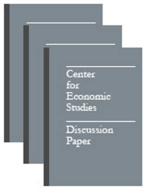An In-Depth Examination of Requirements for Disclosure Risk Assessment
An In-Depth Examination of Requirements for Disclosure Risk Assessment
Abstract
The use of formal privacy to protect the confidentiality of responses in the 2020 Decennial Census of Population and Housing has triggered renewed interest and debate over how to measure the disclosure risks and societal benefits of the published data products. Following long-established precedent in economics and statistics, we argue that any proposal for quantifying disclosure risk should be based on pre-specified, objective criteria. Such criteria should be used to compare methodologies to identify those with the most desirable properties. We illustrate this approach, using simple desiderata, to evaluate the absolute disclosure risk framework, the counterfactual framework underlying differential privacy, and prior-to-posterior comparisons. We conclude that satisfying all the desiderata is impossible, but counterfactual comparisons satisfy the most while absolute disclosure risk satisfies the fewest. Furthermore, we explain that many of the criticisms levied against differential privacy would be levied against any technology that is not equivalent to direct, unrestricted access to confidential data. Thus, more research is needed, but in the near-term, the counterfactual approach appears best-suited for privacy-utility analysis.
Others in Series
Working Paper
Working Paper
Working Paper




